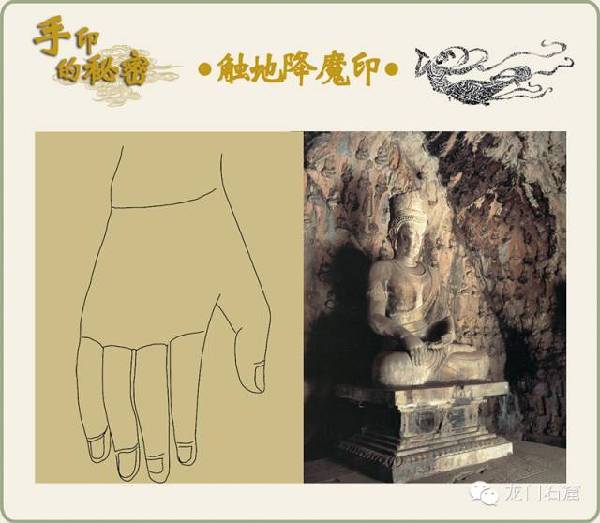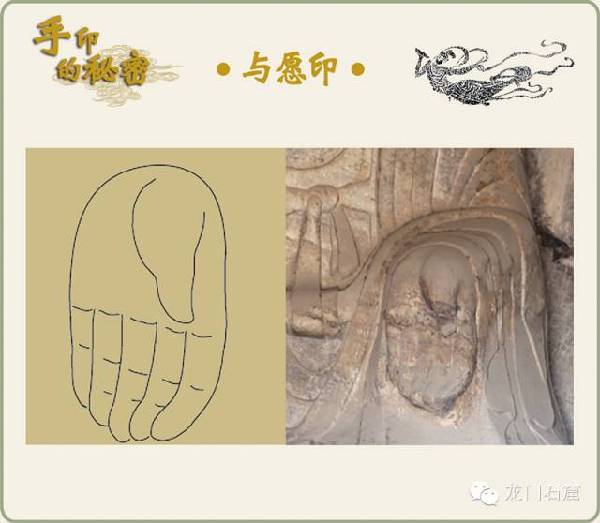Secret of Buddha's hand mudras and Longmen Grottoes
Updated: 2015-10-19
 |
|
The Vairocana Buddha in Longmen Grottoes and the "earth witness" mudra [Photo / Longmen Grottoes on WeChat] |
The bhūmisparśa, or "earth witness" mudra, is one of the most common iconic images of Buddhism. It depicts the Buddha sitting in meditation with his left hand, palm upright, in his lap, and his right hand touching the earth. It represents the Buddha asking Prithvi, the devi of the earth, that she witnessed his enlightenment.
 |
|
The main Buddha in Huangfugong Grotto with Varada mudra. The Buddha's left hand appears with six fingers, which is rarely seen in China's grottoes. [Photo / Longmen Grottoes on WeChat] |
The Varada mudra, known as the gesture of generosity, signifies offering, welcome, charity, giving, compassion and sincerity. It is mostly shown with left hand, arm crooked and the palm offered slightly turned up or in the case of the arm facing down the palm presented with the fingers upright or slightly bent.
In China during the Northern Wei period, the fingers are stiff and then gradually begin to loosen as it developed over time, eventually leading to the Tang dynasty standard where the fingers are naturally curved.






